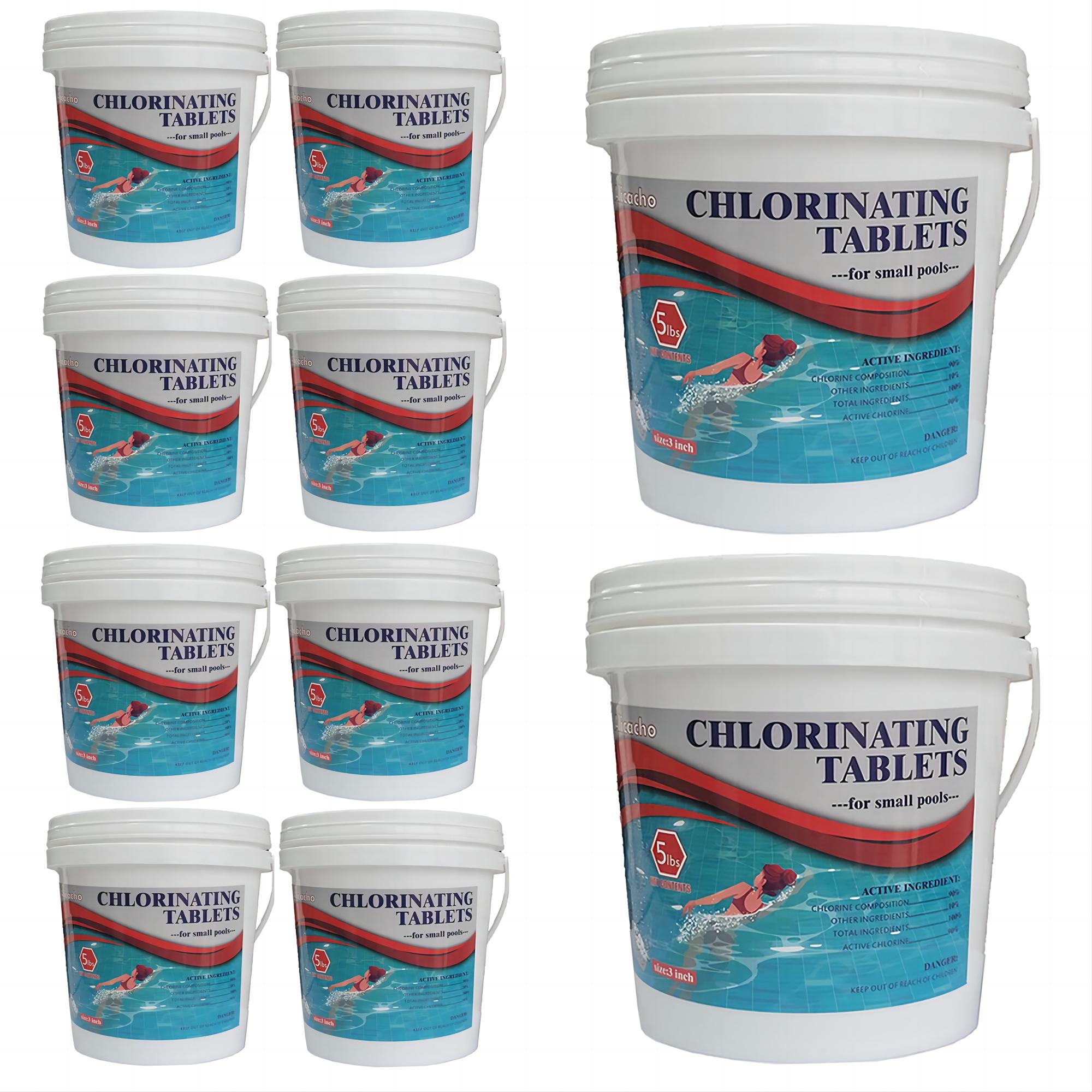One of the essential things to know before performing pool shocking, is when to add shock to pool. Since, it is a process where you are about to add chemicals into the pool water, proper timing, and even the right amount of pool shock must be calculated well. This will help balance all the chemicals present and those that you will be adding to your pools.
Pool shocking is performed to destroy and eliminate all the harmful bacteria, germs, contaminants, and algae that could be possibly present in our pools. Once a pool becomes hazy or cloudy, especially if it is used heavily, or there’s a calamity that has happened, pool shock is one of the immediate responses of pool owners.
In this article, we will discuss the different facts about pool shocking, as well as its definition, all the safety tips that must be remembered and executed before pool shocking, proper timing when to add shock to pool, and a lot more. So, if you are a new pool owner, and you want to learn more about pool shocking, you better finish this article by the very end.
Part 1. Getting To Know More About Pool Shock
As a pool owner, one of your ultimate happiness is having a clean, sparkling, and healthy pool, especially if it can be kept as it is for a long time. However, there can be many factors around pools, that could contribute to their state, no matter what happens. There is rain, sunlight, different debris, and a lot more which affects the pool’s chemistry. Even if there are sanitizing agents applied to pools, and even if they are doing great at their tasks, there are also factors that will make them evaporate too quickly, the very reason why there could be lots of pathogens in your pools.
And when the situation is already as bad as this is, one of the most effective things to do to fully overcome it is through pool shock. This process will boost the chlorine levels in your pools as fast as possible, and can also help you save money and effort as it could help in reducing maintenance tasks as time goes on. To help you understand things that pool shocking can do to your pool, we have listed them, below.
1. Raise the Level of Sanitizer in your Pool Quickly.
Once you have executed pool shocking, it will balance your pool chemistry, and this will make your pool free from any bacteria or algae. The level of sanitizers in our pools can easily degrade if there are heavy activities executed on it, the level of chlorine will immediately drop, and you can notice your pool being cloudy or hazy. Through pool shocking, everything will be addressed and cleared right away.
2. kill Algae Blooms.
Another one of the very good effects of pool shock is it can kill algae blooms in your pool water. It is one of the most effective ways to kill algae since there are huge doses of chlorine that you have to add to your pool. Pool shock disrupts the cell walls of algae to stop them from multiplying.
3. Remove Chloramines in Your Pools.
Another good effect of conducting pool shock is the removal of chloramines. These chloramines are formed when chlorine mixes with urine or sweat, this is also known as combined chlorine. There is only a certain level of combined chlorine that a pool must have, once it has exceeded, it can stop free chlorine from sanitizing the pool water, and because of this, there could be a possible surge in the level of bacteria and pathogens as well. If you already see that your pool is cloudy or hazy, or if it can cause eye irritation, or if there is a strong smell of chlorine in your pool, then levels of chloramines can already be too high.
And there you are! These are only some of the good benefits of adding additional doses of chlorine to your pool water through the process of pool shock.
Part 2. When To Add Shock To Pool?
Now, we have to answer the most important question in this post, when to add shock to pool? Well, this is also one of the most important questions that needs to be addressed immediately. If you are not using a non-chlorine chock, it is advisable to perform pool shocking at night.
Heat break and UV radiation are present in the daytime which are factors that could deplete the level of chlorine in pools, this is why it is really necessary to know when to add shock to pool. And to guide every pool owner, and give all the useful details about it, we have cited some situations below.
1. After a Heavy Use.
If you have ever used your pool for recreation and parties and you have invited a lot of guests, there is a higher possibility that your pool water will be contaminated with lots of organic contaminants like shampoo, soap, and even body oils. This is when to add shock to pool since the level of chlorine will likely deteriorate.
2. After a Storm or a Heavy Rain.
It is also needed that you perform pool shocks after a strong typhoon or heavy rain.
3. After Long Days of Hot Weather.
Because of the excessive heat of the sun, your pool’s temperature can rise. This will lead to a growth in bacteria and it will also lessen the effectiveness of chlorine. Once the hot days are gone, this is when to add shock to pool is needed.
4. Opening and Closing of your Pool.
You must also shock your pool once you have decided to open it after a long time. If the pool has been closed for months, there can be bacteria and algae build-up, and it is when you need to shock your pool as well. On the other hand, it is also a wise decision that you shock your pool before closing it, this will avoid the build-up of too many contaminants, algae, and bacteria in your pool water.
Part 3. How Do You Perform Pool Shocking?
After we talked about when to add shock to pool, let us discuss the different steps on how can you execute pool shock.
Step 1. Make Sure the Volume of Your Pool.
As a pool owner, you should know how large or small your pool is. You can use a pool calculator. This is essential for you to be able to know how much shock should you use for your pool. To avoid over or under-chlorination, you should not make guesses.
Step 2. Make Sure you are Equipped and Ready with all Your Safety Gear and Supplies.
Wear all your safety gear, starting from the goggles, to your safety gloves. To protect your body from accident splashes of chemicals or even fumes, this is important. You also have to be ready with all the supplies and materials needed to shock your pool, these include a bucket, test kits, pool shock, and a wooden stick so you can carefully and freely mix your pool shock solution in your large bucket.

Step 3. Use Test Strips to Test Your Pool Water.
Another important step in pool shock is testing your pool water chemicals. This will also help you gauge how much shock your pool needs. You have to initially test the free chlorine level, the combined chlorine, and the total chlorine levels as well. Once the level of free chlorine is above 0.2 ppm, you have to execute pool shocking. You also have to check the level of the pH before adding any solution, the range must be between 7.2 and 7.6, if it is higher, pool shock can be ineffective.
Step 4. Start Adding the Pool Shock.
Now, you can add your pool shock. Check your pool pump, and you have to be sure that it is running at full speed to maximize the circulation of your pool water. You can also go around the perimeter of your pool to get a larger coverage, you can also do brushing to distribute the shock solution evenly. In case you are about to use an unstabilized shock, it is advised that you perform the shocking process at night. If you want it to be applied in the daytime, use stabilized shock.

Step 5. Allow the Shock to Circulate in Your Pool.
The average time pool shocks work is around 8 to 12 hours, and if you are using a non-chlorine shock, you can allot 15 minutes, and it should be enough for the shock to circulate and be able to sanitize your pool water. In case that you have an algae infestation, you have to brush the pool once you are done shocking to remove other debris, and then start running your filter. You can also backwash and rinse your filter so you can avoid recontamination. In case you still notice algae in your pool, you can always start shocking your pool once more.
Step 6. Rebalance and Test your Pool Water.
Now that you are finally done with shocking, you have to test and rebalance the chemicals that are in your pool! Check the water chemistry immediately! You have to make sure that all the chemicals and components of your pool water are in the required and needed ranges. You can always make adjustments if necessary. You have to test and test until the chemicals have reached the needed levels.
And once you are done, you can finally observe a really clean and healthy pool water, free from any type of algae, germs, or bacteria, that may bring harm to your pool and the bathers as well.
Part 4. FAQs
1. Will Pool Shock Raise the Level of your Pool’s pH?
There are types of pool shocks that will raise the pH of your pool, some of these shocks are liquid chlorine and cal-hypo. Some pool shocks have near to neutral pH which is stabilized dichlor shock.
2. What is the ideal Frequency of Shocking your Pool?
It is also important to identify the ideal frequency of pool shocking. It is advised that you shock your pools every 1 to 2 weeks regularly. This will maintain your pool’s health and will keep it as healthy as needed. It is also important especially if you have a really heavy load of bathers all the time, this will prevent organic contaminants from dwelling in your pool water such as lotion, sweat, shampoo, and even detergents from the bather’s swimsuits.



